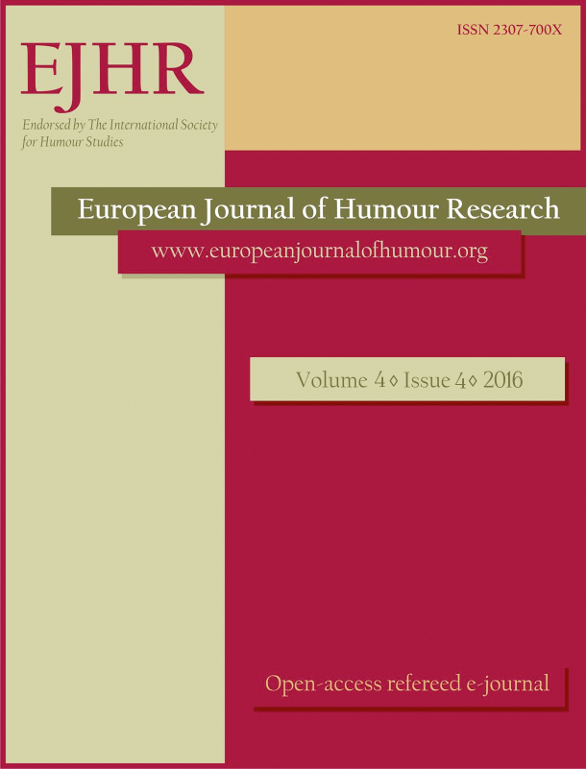Looping out loud:
Looping out loud:
A multimodal analysis of humour on Vine
Author(s): Vittorio MaroneSubject(s): Social Sciences, Language and Literature Studies, Media studies, Theoretical Linguistics, Applied Linguistics, Communication studies, Pragmatics, Sociolinguistics, Descriptive linguistics, Theory of Communication
Published by: Krakowskie Towarzystwo Popularyzowania Wiedzy o Komunikacji Językowej Tertium
Keywords: online humour; humour in computer-mediated communication (CMC); multimodal humour; humour on social media; discursive functions of humour;
Summary/Abstract: Launched in 2013, Vine is a popular microblogging service that allows users to record, edit, and share six-second videos that loop ad libitum, until another video is selected. At this time, the communicative, expressive, and semiotic affordances of Vine and similar services have still to be fully explored by users and scholars alike. Through a multimodal analysis approach drawing on New London Group’s (1996) work, this paper investigates how people construct humour on Vine by artfully arranging different modes of expression. The analysis focused on user-enacted humour, as opposed to captured comical scenes or bare samples taken from TV shows or movies. The study hypothesises the social construction of a novel humorous language that draws on extant forms of humour and a variety of modes and techniques derived from audio-visual media and computer-mediated communication, as users inventively exploit the framework provided by the Vine platform. Findings show that users create instant characters to amplify the impact of their solo video recordings, use Vine as a “humorous confessional”, explore the potential of hand-held media by relying on “one hand and face” expressivity (the other hand holding the device for the video “selfie”), and use technology, internet slang, internet acronyms, emoticons/emojis, and hashtags to convey humour and complement the messages of the videos they post on Vine. The goal of this study is an exploratory analysis of humour and its discursive functions in an emergent social medium by considering its affordances, as users find new and creative ways to harness its expressive potential.
Journal: The European Journal of Humour Research
- Issue Year: 4/2016
- Issue No: 4
- Page Range: 50-66
- Page Count: 17
- Language: English

